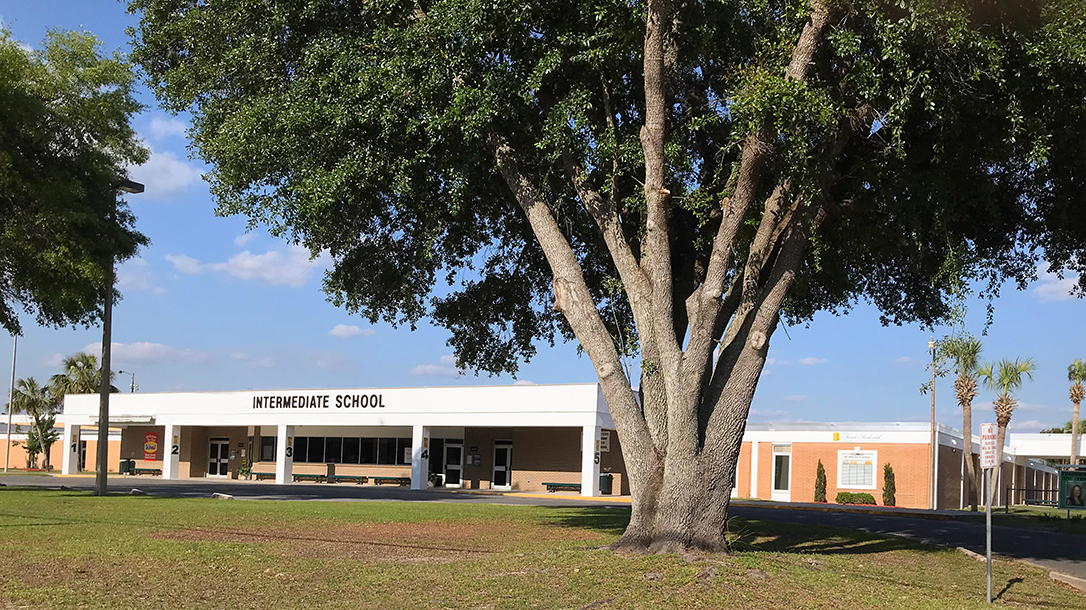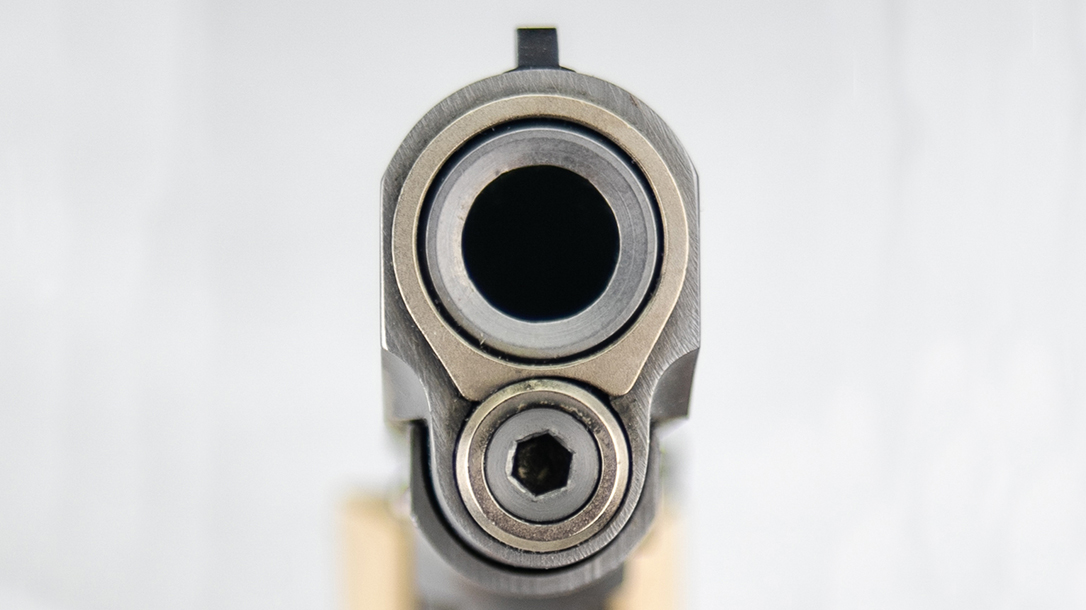I began writing this article the morning after the county school commission where I live approved a program to arm and train volunteer faculty members. I consider that very good news, as school massacres have become a major safety issue.
Although the media and politicians have focused on gun bans as a panacea, professionals in threat management know the real answer is the ability to interdict such threats on the ground as soon as they erupt. In this context, arming school faculty members is a proven strategy. Let’s begin with the Israeli model.
Arming Teachers: Israeli Defenses
In a February 2018 post on americanthinker.com, Ted Noel wrote, “In 1974, Israel endured the Ma’alot Massacre at the hands of Islamic terrorists. Twenty-five were killed and 68 more injured. Since then, the Israelis have completely changed how they tackle school safety. Since 1974, there have been two successful attacks, with fewer than 10 dead. In both cases, armed teachers killed the bad guys. That’s still too many dead, but it’s fewer than we lost in Florida just this week.”
Advertisement — Continue Reading Below
Case No. 1
Consider the Ma’alot Massacre as Case One. When some in the Israeli community suggested arming school personnel to defend children, there arose a reflective cry much like what we are hearing now in the United States: “Oh, no! That’s unthinkable! We are teachers, not armed combatants.” There, as now, the issue became a battleground for opposing sides on gun rights and self-defense issues.
To her great credit, then-Prime Minister Golda Meir ended the discussion with a decisive statement; “We will not make politics on the backs of our children.” The armed schools program went forward. The mix initially included volunteer school personnel and even some volunteer private citizens, armed with concealed handguns and trained for the purpose by an Israeli government agency. Professional armed personnel supplemented the protection.
Advertisement — Continue Reading Below
The result? In a nation constantly battling terrorism, the predicted waves of more Ma’alot-like incidents did not materialize. Noel goes on to describe two more situations where armed teachers stopped the murderers before they could rack up a big death toll.
Case No. 2
This brings up another case that resulted in the deaths of many innocent Israeli children. Case Two: In 1997, the Island of Peace Massacre occurred on the border between Israel and Jordan when a crazed Jordanian soldier opened fire with his military-issued rifle, killing seven children and wounding a half-dozen more. Note at the time that the ironically named Island of Peace was a gun-free zone; the children’s adult chaperones were not allowed to be armed. This is more proof that gun-free zones are basically hunting preserves for psychopathic murderers and terrorists.
Arming school personnel has proven to work around the world, including Peru and the Philippines.
Advertisement — Continue Reading Below
Arming Teachers: Examples in the United States
Case No. 3
Because arming faculty members hasn’t been a traditional paradigm here in the United States, examples of their usefulness do not abound, but they exist. Consider, for example, Case Three, which took place in Mississippi in 1997.
A 16-year-old stabbed and bludgeoned his mother to death to get the key to the gun cabinet of his estranged father, where he found a lever-action .30-30 deer rifle. He went to his high school and opened fire, murdering two innocent teens and wounding seven more. He then headed toward a nearby junior high school, still armed and with ample ammunition. The vice principal retrieved a subcompact Colt .45 from his truck in the parking lot and confronted the killer, who immediately surrendered.
Case No. 4
Case Four took place in Pennsylvania in 1998. A 14-year-old described as a “loner” stole his father’s .25-caliber pistol and brought it to a middle school dance held at a banquet hall off-campus. He opened fire, killing one victim and wounding three more. Hearing the shots, the owner of the building retrieved a shotgun from his office and sprinted to the scene. The murderer surrendered at gunpoint, and the incident ended.
Advertisement — Continue Reading Below
Case No. 5
Case Five occurred back in 2002 in Virginia. A disgruntled foreign student at a law school opened fire with a .380 pistol, killing three victims and wounding three more. Two students, both off-duty law enforcement personnel, heard the gunfire and ran to their cars to retrieve a 9mm pistol and a .357 Magnum revolver, respectively. According to reports, the killer dropped his still-partially-loaded weapon and surrendered when they took him at gunpoint.
So, what can we learn from these cases? First, as soon as the proverbial “good guys with guns” took the gunmen at gunpoint, each of the incidents ended immediately with no further injury. Second, in each case, there was an element of lag time as those good guys went to retrieve their defensive firearms — time in which each perpetrator caused more harm. In each situation, if there had been armed personnel on the scene when the attack started, the casualty toll could have been greatly reduced.
Advertisement — Continue Reading Below
Arming Teachers: First-Responder Analogies
From principal to school nurse to teacher, school staff are the daytime caretakers of our children, and they’re responsible for their safety. This is why schools train personnel to respond to possible fires.
Case No. 6
In Case Six, an arsonist set fire to the Our Lady of the Angels Catholic school in Chicago in 1958. Ninety-two children and three nuns died in the fire, many of them huddled at their desks, praying. The tragedy triggered a wave of school fire prevention and awareness; nothing like it has happened in our country since. If a child gets careless with a Bunsen burner, a teacher puts it out with a handy fire extinguisher.
Why We Should Consider Arming Teachers
Historically, it’s well publicized when a child collapses and dies in gym class from something like an undiagnosed heart defect. Today, almost every teacher is trained in CPR, and most schools have automatic electronic defibrillators (AEDs) readily accessible.
Advertisement — Continue Reading Below
Why? Because the cornerstone of any time-and-motion study is that motion takes time; time to recognize the emergency and call 911. It also takes time for responders to mobilize and get to the emergency. During that time, a containable fire can spread and become a deadly conflagration. During that time, a stopped heart that could have been restarted leads instead to irreversible brain death.
It’s the same when a mass murderer targets a school. The gun of the trained faculty member becomes a direct analog to the fire extinguisher or AED. Instead of waiting helplessly first responders, teachers can immediately end the threat.
Armed Deterrent
Finally, consider the deterrent effect, as seen so dramatically in Israel, and in American air travel when the armed pilots program supplemented air marshals after 9/11. A high likelihood of being killed by a victim obviously deters murderers. Also, there has not yet been a massacre in a school with armed teachers, many of which already exist.
Advertisement — Continue Reading Below
Because this is the “Self-Defense & The Law” column, we should close by noting that, to the best of our knowledge, none of the rescuers who stopped the killing in Cases One through Five were ever criminally charged or civilly sued for their heroic lifesaving actions. By contrast, parents sued the city of Chicago and the school’s archdiocese for that predictable event.
This article is from the September/October 2018 issue of Combat Handguns Magazine, on sale now. Grab your copy at OutdoorGroupStore.com.

























